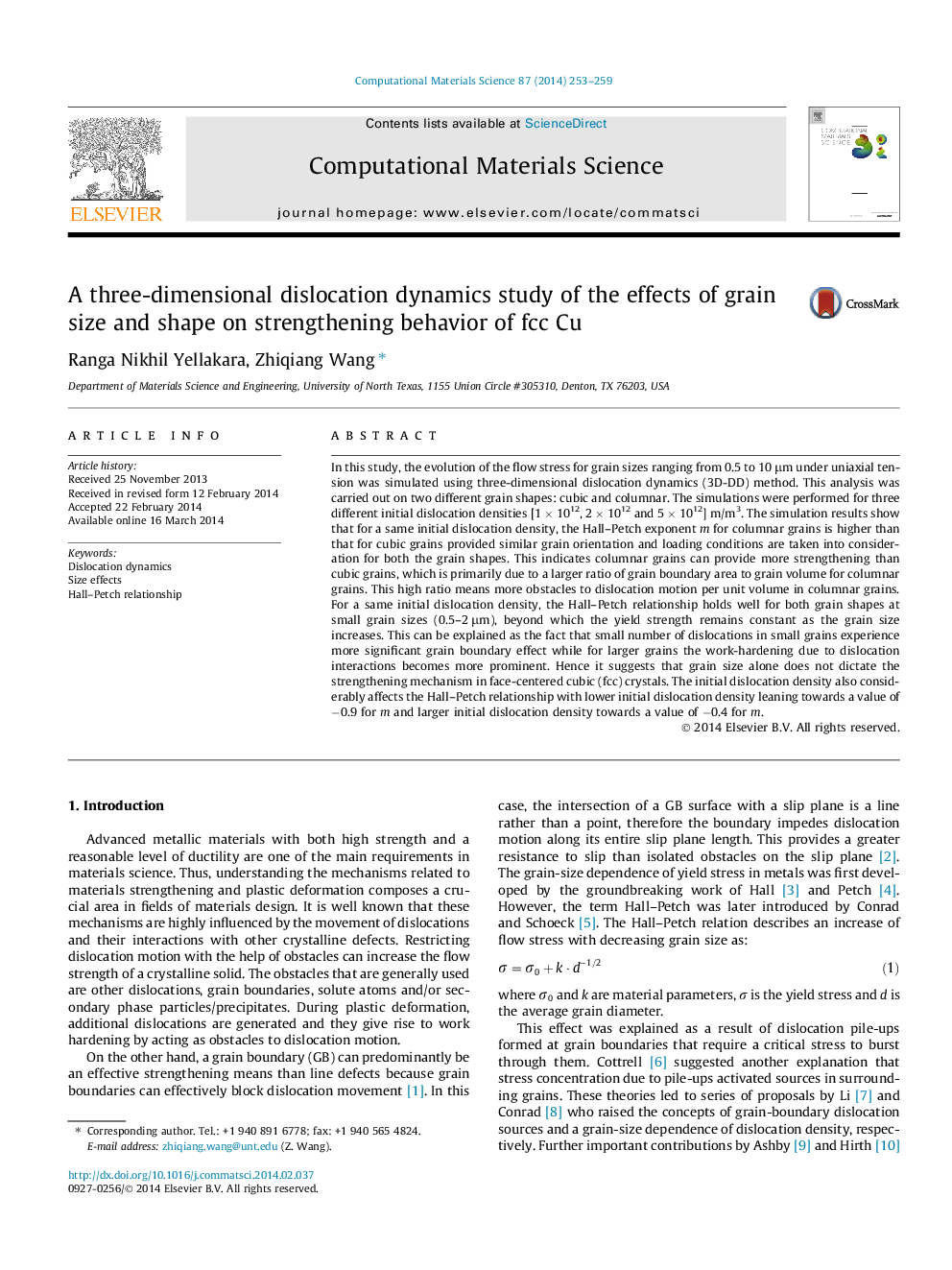| کد مقاله | کد نشریه | سال انتشار | مقاله انگلیسی | نسخه تمام متن |
|---|---|---|---|---|
| 1560566 | 1513922 | 2014 | 7 صفحه PDF | دانلود رایگان |
عنوان انگلیسی مقاله ISI
A three-dimensional dislocation dynamics study of the effects of grain size and shape on strengthening behavior of fcc Cu
دانلود مقاله + سفارش ترجمه
دانلود مقاله ISI انگلیسی
رایگان برای ایرانیان
کلمات کلیدی
موضوعات مرتبط
مهندسی و علوم پایه
سایر رشته های مهندسی
مکانیک محاسباتی
پیش نمایش صفحه اول مقاله

چکیده انگلیسی
In this study, the evolution of the flow stress for grain sizes ranging from 0.5 to 10 μm under uniaxial tension was simulated using three-dimensional dislocation dynamics (3D-DD) method. This analysis was carried out on two different grain shapes: cubic and columnar. The simulations were performed for three different initial dislocation densities [1 Ã 1012, 2 Ã 1012 and 5 Ã 1012] m/m3. The simulation results show that for a same initial dislocation density, the Hall-Petch exponent m for columnar grains is higher than that for cubic grains provided similar grain orientation and loading conditions are taken into consideration for both the grain shapes. This indicates columnar grains can provide more strengthening than cubic grains, which is primarily due to a larger ratio of grain boundary area to grain volume for columnar grains. This high ratio means more obstacles to dislocation motion per unit volume in columnar grains. For a same initial dislocation density, the Hall-Petch relationship holds well for both grain shapes at small grain sizes (0.5-2 μm), beyond which the yield strength remains constant as the grain size increases. This can be explained as the fact that small number of dislocations in small grains experience more significant grain boundary effect while for larger grains the work-hardening due to dislocation interactions becomes more prominent. Hence it suggests that grain size alone does not dictate the strengthening mechanism in face-centered cubic (fcc) crystals. The initial dislocation density also considerably affects the Hall-Petch relationship with lower initial dislocation density leaning towards a value of â0.9 for m and larger initial dislocation density towards a value of â0.4 for m.
ناشر
Database: Elsevier - ScienceDirect (ساینس دایرکت)
Journal: Computational Materials Science - Volume 87, May 2014, Pages 253-259
Journal: Computational Materials Science - Volume 87, May 2014, Pages 253-259
نویسندگان
Ranga Nikhil Yellakara, Zhiqiang Wang,